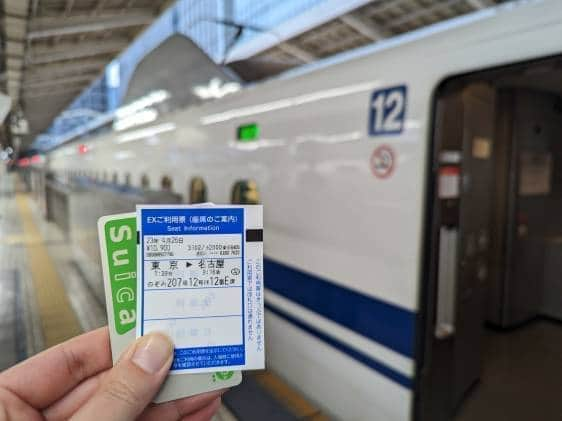Trying to eke out an existence in one of the most expensive cities in the world (or even just lugging your luggage through it) is a sure-fire way to get stiff shoulders. Luckily there are lots of places a knotted-up cheapo can go for an affordable Tokyo massage.
There are probably as many massage options as there are vending machines in Tokyo, but it can be tough to tell which are legit—especially if your knowledge of kanji is limited.
Pro tip: To avoid any unexpected “happy endings”, a good rule of thumb is to avoid anything with a garish sign, especially if it features lascivious ladies on it, includes wine, and/or seems to be open till sunrise (unless, of course, that’s the kind of treatment you’re after).
Tokyo massages: Where to go
Many hotels and hot spring complexes offer a variety of safe massages—everything from vigorous Korean body scrubbing to Ayurvedic oil treatments, and that one where they walk all over your back. But with prices ranging from ¥8,000–¥30,000, these are luxury pampering options. For some cheapos, their entire budget for three days in Tokyo might only be ¥10,000!
Seikotsuin | Sekkotsuin (整骨院 | 接骨院)
Our advice is to skip all of that fancy stuff and instead look out for this kind of sign, which you’re almost guaranteed to find several of around your train station.

Sometimes referred to as “bone setters”, “judo therapists” (based on their long association with the sport and its injuries) or “pain clinics” (not in a kinky way), seikotsuin (整骨院) or sekkotsuin (接骨院) clinics offer sports massage and physiotherapy-type treatments.
Though the first kanji character may differ, the services at seikotsuin and sekkotsuin are pretty much the same.

What to expect
A typical treatment at a seikotsuin/sekkotsuin involves 10-20 minutes of electrode pads on your back/other aching muscles, which zap your knots with varying intensity (it’s a lot more tolerable than it sounds), followed by a decent, basic massage (no oil or nudity involved—the staff might even put a towel between your fully-clothed body and their hands).
Some places also throw in what I like to call “leg bags” (awesome things that use air pressure to squeeze your legs gently), or 10 minutes on a water jet massage bed.
At a seikotsuin/sekkotsuin, 30 minutes of treatment is typically priced at ¥2,500–¥3,000. Some clinics offer cheaper (¥1,500) 10-20 minute neck and shoulder massages, which allows you to test things out before committing to a more expensive, longer course. You can usually just drop in without making an appointment.
Can I use Japanese health insurance?
While some seikotsuin/sekkotsuin might accept Japanese national health insurance, it’s a bit of a grey area: they will probably only do so if your neck muscles are so tense you can no longer turn your head. In other words, a simple massage to de-stress wouldn’t be covered, but actual injuries might be.
If one of these clinics does take your health insurance, you’re looking at roughly ¥1,500–¥3,000 for your first session, with the fees getting lower the more often you go.
If you do have an injury, a seikotsuin/sekkotsuin is actually a great place to go for rehabilitation. Many years ago, I tore the ligaments in my wrist (novice snowboarding misadventure, ow), and my local guys helped treat it with an ultrasound micro massage device that got right down to, well, the ligaments.
Shiatsu and acupuncture in Tokyo (鍼灸院)
If you’re keen on shiatsu (traditional Japanese massage based on acupuncture points), are after a bit of Japanese acupuncture (said to use shorter, finer needles and be left in for shorter times, compared to the Chinese version) or want to add some moxibustion (when they burn those bundles/balls of herbs on you—again, more pleasant that it sounds) to the mix, you’ll need to look for the 鍼灸院 sign instead of a seikotsuin.

Shinkyuuin clinics generally don’t accept health insurance, and they tend to be a bit more expensive, with a 30-minute session averaging ¥3,000, and 50 min or longer costing ¥5,000 and up. You usually need to make an appointment in advance.
Suggestions for shinkyuuin and dedicated shiatsu spots to take your wearied bones include Genpoudou Clinic in Shibuya (link in Japanese), Namikoshi Shiatsu Treatment Centre in Bunkyo ward (said to be a rather famous joint), the central Oketaku Shiatsu Clinic (a home-visit service rather than an actual clinic—they sometimes offer one-coin shiatsu sessions), and Iokai Shiatsu Center in Taito.

Other options for Tokyo massage
There are also chiropractic clinics (カイロプラクティック), as well as seitai (聖体) clinics (although also a treatment where they manipulate your body, it’s seen as somewhat less clicky than chiropractics), and, to a lesser extent, osteopathy clinics, but these all tend to be pricier.
Another option is to pop into one of the many quick massage/reflexology chain stores that are scattered around major train stations and malls. Queensway, Raffine and Temomin are all popular Tokyo massage salons and offer a variety of options, often starting at 10 minutes, but, in our opinion, the treatments are over-priced for the quality of what you get, and also feel a bit impersonal.
Tokyo massage: Summary
Our first-line advice: open up your map app, give your local seikotsuin/sekkotsuin a go, save some yen, and take it from there. If you don’t speak much Japanese, get someone to jot down on paper for you what hurts and what the reason might be (e.g. bad posture, pulled a muscle, heavy bags, old injury), before you go.
Alternatively, if you’re an extreme cheapo, you could just test out the massage chairs at Donki or a furniture store for free. If they throw you and the chair out (after making you buy it) … we said nothing.
While we do our best to ensure it’s correct, information is subject to change. This article is in no way intended to serve as medical advice. Post originally published in April, 2014. Last updated in October, 2020.



























